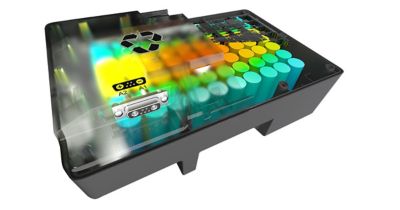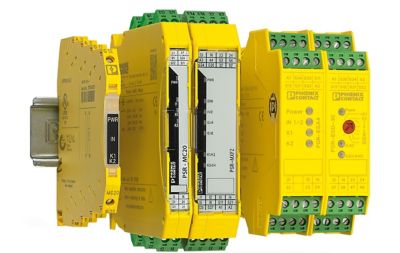-
-
Access Free Student Software
Ansys empowers the next generation of engineers
Students get free access to world-class simulation software.
-
Connect with Ansys Now!
Design your future
Connect with Ansys to explore how simulation can power your next breakthrough.
Countries & Regions
Free Trials
Products & Services
Learn
About
Back
Products & Services
Back
Learn
Ansys empowers the next generation of engineers
Students get free access to world-class simulation software.
Back
About
Design your future
Connect with Ansys to explore how simulation can power your next breakthrough.
Free Trials
ANSYS BLOG
October 11, 2022
What is a Digital Twin in Manufacturing?
Smart manufacturing relies on supply chain, factory, system, and equipment data. To monitor and analyze constantly changing information in their production process, manufacturers exploring industry 4.0 applications use the real-time data power of digital twins.
5 Applications of Digital Twin Technology in Smart Manufacturing
In smart manufacturing, the advantages and benefits of using digital twins are plentiful. From anticipating maintenance issues to evaluating product upgrades and informing financial decisions, digital twins give companies the predictive insights to achieve their business goals. Here are five examples of how digital twins address the different needs of smart manufacturing.
Decrease Product Time to Market
By creating a virtual replica connected to the physical asset, digital twins give smart manufacturers the real-time insights they need to make production decisions quickly. Because the delays associated with physical products are removed — hardware, labor, materials, etc. — operators can speed up every step of the manufacturing process, including design, development, testing, and maintenance.

Case study: ENGIE Lab CRIGEN relies on Ansys' digital twin technology to accelerate the zero-carbon energy transition for its customers.
- Problem: Carbon emissions are eroding our climate’s health.
- Solution: Ansys Twin Builder helps ENGIE Lab CRIGEN reduce simulation time from hours to seconds to develop new energy solutions faster.
- Result: Real-time optimization of energy and environmental performance of equipment is a key asset in the zero-carbon transition.
Optimize Process and Product Performance
Using a digital twin enables smart manufacturers to predict the quality of the end product, helping them make more informed decisions about issues such as material upgrades and process enhancements. In industrial manufacturing, digital twins help ensure consistency across large-scale production so the end product is always in line with specifications.

Case study: Kärcher uses Ansys digital twin technology to simulate different battery cells and housing materials in real-world situations.
- Problem: Reduce the weight and heat of small battery packs.
- Solution: Kärcher engineers used Twin Builder as the basis for a digital engineering workflow that enabled fast and accurate concept comparisons during optimization.
- Result: The company discovered a cell type and a battery housing design that enabled them to reduce the number of cells in the battery pack by 20%.
Increase Production Efficiency
Digital twins empower operators to continuously monitor processes and systems to evaluate the most efficient methods. If the production flow isn’t operating at the ideal capacity, a digital twin will immediately reveal opportunities for improvement. By increasing production efficiency, digital twins help smart manufacturers reach their sustainability goals by reducing energy and material consumption.
Case Study: The EDF Group (EDF) uses Twin Builder to design nuclear power plants.
- Problem: Developing affordable low-carbon power generation requires highly efficient and reliable systems.
- Solution: The company used Twin Builder to develop digital twins of plant turbo-alternators, giving them the ability to use predictive maintenance and reduce repair expenses.
- Result: EDF engineers devise designs that push boundaries and meet challenging regulatory requirements, providing unequalled power output for its worldwide customers.
Enable Predictive Maintenance
In smart manufacturing, unplanned downtime can cost tens of thousands of dollars per hour. Digital twins give operators the foresight to anticipate issues based on different environmental pressures and scenarios. By using digital twins to look into the internal workings of their complex devices, manufacturers can predict when issues will occur and attend to maintenance concerns before they disrupt the entire production.

- Case study: Phoenix Contact Electronics engineers use Ansys software to integrate real-time sensor data with simulation results to predict failures in advance.
- Problem: Creating smaller elementary relays was needed to accommodate customer demands for the space-saving technology.
- Solution: Phoenix Contact used Ansys optiSLang and Twin Builder to understand all of the interactions related to the electromechanics, structural and thermal properties of the relay.
- Result: Phoenix Contact built PSRmini safety relays, which offer the full performance of a large safety relay in a slimmer, more compact design.
Allow for Virtual Commissioning
Virtual commissioning enables early validation of system designs to predict and solve problems that happen when machines and processes are integrated for the first time. In smart manufacturing, digital twin technology shows how entire systems will interact — not just individual devices, but how each device will influence the performance of an entire production floor.
Case study: Rockwell Automation uses Twin Builder to provide insights and improve system performance.
- Problem: Environmental and material effects like flow rates, mechanical stresses, and thermal profiles impact in-field assets.
- Solution: Rockwell Automation connected Twin Builder to its Studio 5000 Simulation Interface.
- Result: Engineers can simulate complex and detailed physical phenomena to better understand their asset in operation.
See what a digital twin could do for your company. Get started with a free trial of Ansys Twin Builder.